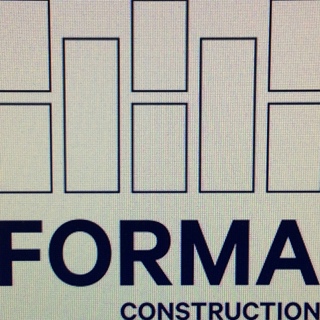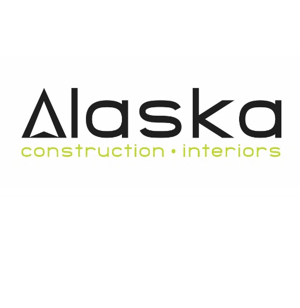Information
-
Audit Title/Job Name
-
Job No.
-
Conducted on
-
Prepared by
-
Location
-
Superintendent
-
Project Manager
-
Inspected With
1. Personal Protective Equipment
-
1.1 Safety glasses and/or goggles available & used as required
-
1.2 High visibility vests/class II vests where required
-
1.3 Face shield available for bulk liquid tasks or grinding
-
1.4 Hand protection used/worn as required
-
1.5 Proper footwear worn as required?
-
1.6. Hard hats worn as required
2. Tools
-
2.1 Circular/skill saws properly guarded<br>
-
2.2 Hand grinders have guards in place
-
2.3 Table saws are properly guarded (hood, spreader, anti-kickback)
-
2.4 Compressed gas cylinders not in use have caps in place
-
2.5 Compressed gas cylinders stored secured & upright
-
2.6 Does Pneumatic equipment have a safety device on the muzzle?
3. Electrical
-
3.1 Energized breaker panels have covers & breakers are labeled
-
3.2 Electrical panel knockouts are in place
-
3.3. Lockout tag/out procedures are being followed
-
3.4 Light bulbs for illumination protected from breakage and have bulbs provided
-
3.5 Electric power tools are double insulated or grounded
-
3.6 Is strain relief provided on flexible cords and cables
-
3.7 Do extension cords have ground pins
-
3.8 Cords are protected from damage such as vehicles
-
3.9 Are extension cords free from splices or damage to insulation
4. Fire Protection
-
4.1 Flammable liquids are in metal safety cans
-
4.2 Burn permits are completed and at the location of hot work operations
-
4.3 Fire extinguisher readily available, accessible & inspected
-
4.4 Fire extinguishers inspected monthly/annually as needed
-
4.5 Flammable liquids storage containers labeled properly
-
4.6 Combustible material and waste is removed from the building on a regular basis
5. Cranes and Forklifts
-
5.1 Mobile crane setup properly
-
5.2 Overhead hazards/power lines identified
-
5.3 Tag lines are used during hoisting
-
5.4 Rigging is inspected for wear and damage
-
5.5 Forklift and Crane inspections completed
-
5.6 Forklift, Crane, Rigger and signal person certification current
-
5.7 Is the crane currently certified for the state of washington
-
5.8 Has a qualified lift director been designated
-
5.9 Are all parts of the crane, load line or load prevented from getting within 20 FT of power lines
-
5.10 Load lift plan filled out and signed
6. Program Requirements, First Aid, and Housekeeping
-
6.1 Required postings are posted on bulletin board
-
6.2. Subcontractor safety plans and MSDS are on site
-
6.3. General housekeeping is neat and orderly
-
6.4 Are safety meetings held weekly
-
6.5 Are safety meetings tailored to the operations, documented and attendance taken
-
6.6 Are weekly safety audits conducted weekly, documented and available for inspection
-
6.7 Is there a first aid certified person/persons available onsite at all times and is their certification current and listed on the first aid roster
-
6.8 Are Superintendents, Foreman, crew leaders first aid trained
7. Fall Protection
-
7.1 Wall openings & floor holes are guarded or covered
-
7.2 Guardrails (top rails at 42" +/- 3" and mid rail halfway between) and toe boards in place
-
7.3 Cable guardrails are taught with minimal deflection
-
7.4 Are employees protected from impalement hazards (rebar, stakes, etc)
-
7.5 Are employees protected from falls while constructing leading edge
-
7.6 Are floor openings and/or skylight openings guarded
-
7.7 Are employees using fall protection while working on low pitch roof (4:12 or less)
-
7.8 Are employees protected from falls when working on steep pitch roofs (greater than 4:12) (included roofing work)
-
7.9 Are employees using personal fall restraint or positioning device systems while working on hazardous slopes
-
7.10 Is there a written fall protection plan that addresses fall hazards of 10 ft or more? is it available on site?
-
7.11 Are there unprotected walking working surfaces (an area larger than 45" in all directions
-
7.12 Are employees protected from falls while placing or tying reinforcing steel on a vertical surface
8. Trenches and Excavations
-
8.1 Were utilities that would be expected to be encountered during excavation work located prior to opening and excavation
-
8.2 Protection from cave-ins for >4' deep
-
8.3 Ladders in place every 25' and extended 3' above ground
-
8.4 Trench boxes are less than 2' off the trench floor
-
8.5 Standing water has been removed from the trench
-
8.6 Fall protection around the trench is in place
-
8.7 Soil spoils are greater than 2' from the excavation
-
8.8 Trench is inspected daily and as needed by a competent person
-
8.9 Was soil classified by a competent person
9. Scaffold / Aerial lifts
-
9.1 Is scaffolding erected, moved, dismantled, or altered by a competent person who is supervising experienced and trained employees selected by the competent person
-
9.2 Has the scaffolding been inspected each day before use and signed off by a competent person
-
9.3 Work platforms are fully decked and planked
-
9.4 is safe access provided on scaffolds
-
9.5 Guardrails and toe boards which meet requirements are in place when over 6'
-
9.6 Are guardrails or personal fall arrest systems used to protect employees from falls greater than 10ft to a lower level
-
9.7 Are guardrails installed in accordance with the standard along open-sides and ends
-
9.8 Are scaffolds are set up on firm, level foundation capable of supporting the load
-
9.9 Tied to structure at 4:1 base ratio and at the following 26'
-
9.10 Scaffolds are plumb and square
-
9.11 Are wheels on mobile scaffolds locked
-
9.12 Aerial lifts used properly and inspected daily
-
9.13 Aerial lift operator has proof of training
10. Ladders, Stairs, and Ramps
-
10.1 Are ladders in good repair
-
10.2 Are defective ladders tagged out of service and/or removed
-
10.3 Extension & straight ladders extend 3' beyond landing
-
10.4 Are ladders used for the purpose they were designed for
-
10.5 Is the weight on the ladder within the capacity of the ladder rating
-
10.6 Is the ladder set up at a 4:1 angle
-
10.7 Are workers carrying tools, materials, equipment in a manner that allows the use of both hands
-
10.8 If the ladder doesn't extend at least 3 FT for persons accessing an upper level, is the top and bottom secure and have other grasping devices been provided?
-
10.9 Is the ladder secured at the top and bottom for the person working from the ladder
-
10.10 When there is a break in elevation of 19 inches or more, is there a stairway, ramp or ladder provided
-
10.11 Stair rail provided when change in elevation is greater than 30' or there are 4 risers or more
-
10.12 Ramps used for access are at least 18" wide
11.0 Chemicals/Hazard Communication Globally Harmonized System (GHS)
-
11.1 Is there a written hazard communication program and is it implemented
-
11.2 Is there a chemical inventory on-site
-
11.3 Is there an MSDS (material safety data sheet) or SDS (safety data sheet) for each hazardous product
-
11.4 Are employees provided hazard communication training
12.0 Dump Trucks
-
12.1 Do dump trucks used on site with an obstructed rear view have an operable automatic reverse alarm
-
12.2 Is the alarm audible above the surrounding noise level and no less than 15 FT from the rear of the vehicle
-
12.3 If the workers are in the backing zone or could reasonably be expected to enter the area, is there a spotter/observer or a back up video camera for the driver
-
Audit conclusions and items still needing attention, Items marked N/A are either not applicable or have not been observed on this audit
-
Add media
-
FORMA Safety Representative
-
FORMA Superintendent










